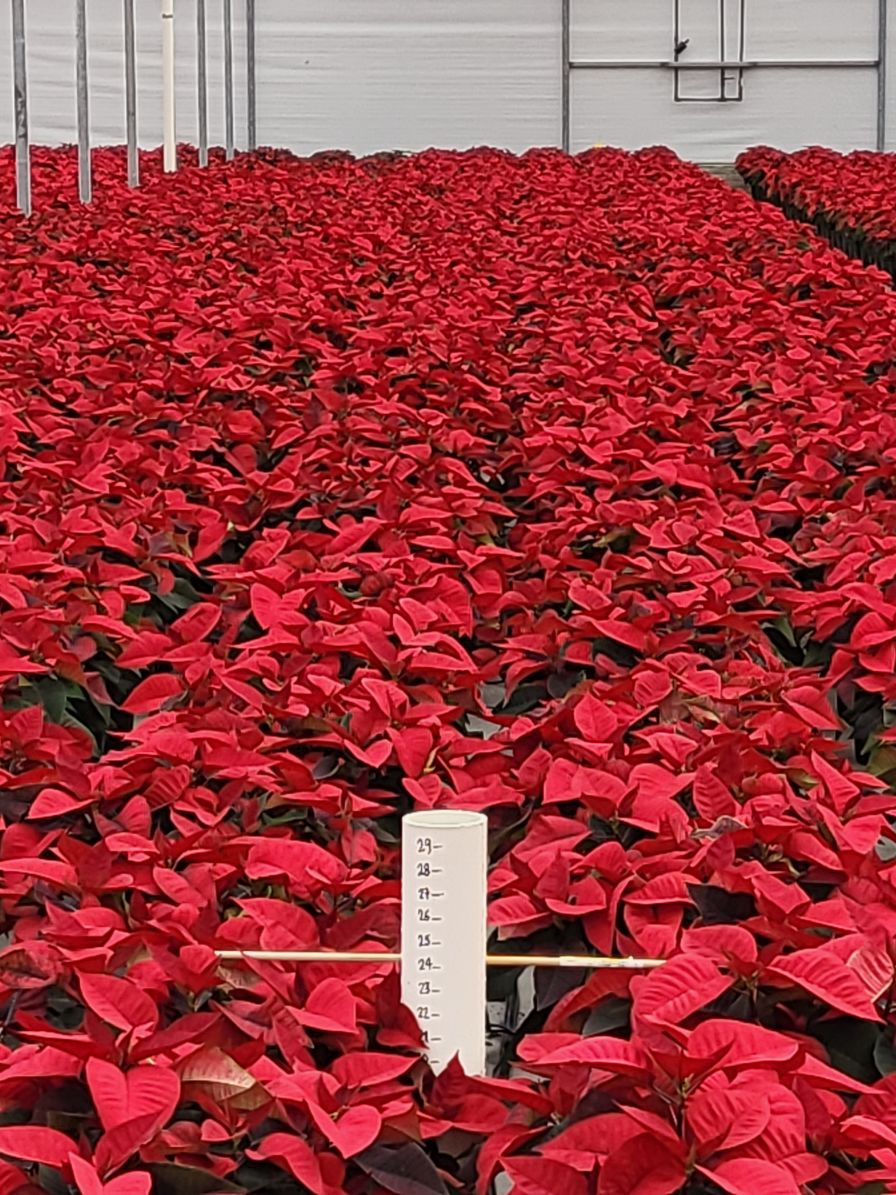Top Plant Growth Regulators for Dealing With Unruly Annuals

Plant growth regulators can help crops meet a height specification from a retailer, as seen with these poinsettias. Photo: Sam Drahn
Recently, I’ve been thinking about the new season and plant growth regulator (PGR) solutions for the more unruly, commonly grown annual species. Immediately, petunia and calibrachoa came to mind as plants that were always a little needy when I was a grower. Do those two plants still pose a challenge for growers? When I contributed to a past Greenhouse Grower article on PGRs, I recommended using smaller doses more frequently. Does this methodology still ring true? Since my days in the greenhouse, I have been more focused on developing products for reducing landscape maintenance costs and extending utility line clearance cycles than maximizing greenhouse spacing, meeting the dimensions of shipping racks, and growing memorable containers for porches and patios.
To answer the above questions, I sent feelers out to the folks who know best. I surveyed growers about some of their most unruly crops and the methods used to temper growth. I cast a wide net, hoping to haul in a diverse set of responses and identify the common threads. Growers came in all shapes and sizes, from coast to coast:
- Greenhouses of various sizes
- Producers for independent garden centers and big box retailers
- Responses from eight U.S. states
So, What Did Growers Say?
- Using PGRs is an invaluable method of slowing plant growth when greenhouse space is at a premium and maximum spacing isn’t an option.
- Retailers can have some very specific height and width specifications.
- PGRs are widely used to enhance the appearance of the most commonly grown greenhouse crops.
- Treating plants early in production allows growers to utilize PGRs as a tool for managing and slowing vegetative growth, not stopping growth.
- When used properly, PGRs can benefit the grower, retailer, and the final customer.
- A wide range of PGRs are being used but most responses centered on paclobutrazol (Pac-O, Bonzi & Piccolo) and daminozide (B-Nine & Dazide). Ethephon (Florel & Collate) to induce branching, delay flowering and control growth.
- Petunia, calibrachoa, chrysanthemums, and poinsettia were listed most frequently as crops that needed a little more attention with PGRs.
Greenhouse growers said it is best to treat plugs and potted liners with plant growth regulators prior to transplant, which is seen as an important tool for producing robust, floriferous, and uncrowded combination planters. This pre-plant application controls the more aggressive varieties while allowing the more sluggish plants to establish and fill in, showcasing the individual plants in the planter design.
“This practice gives us the ability to pre-treat the more aggressive items, petunia and ipomoea, with regulators before installation, allowing the lesser aggressive plants, lantana and setcreasea, to get established and not be overtaken by the faster growing plants,” one grower respondent from the Southeast wrote in the survey. “We use a paclobutrazol drench at a heavy rate on the petunias, a Florel spray treatment on ipomoea and a Paclobutrazol drench at a lower rate on the Whopper Begonias the week before installation.”
Foliar sprays with daminozide were a common response from many growers. It is readily taken up by the foliage and is a great PGR for achieving moderate growth control on a wide variety of species, including chrysanthemum and poinsettia. A western grower noted in the survey, “B-Nine is still my No. 1 PGR. I like it because it is versatile, easy to use, and forgiving.”
Sprenches (a hybrid of a spray and a drench) and drenches with lower rates of paclobutrazol were other widely reported tools and allow for a wider range of species to be treated with a single rate. This can be repeated as needed on more aggressive species without stunting more sensitive plants for the end user.
“For my application method, I use a portable chemical injector hooked up to the irrigation booms and do a heavy ‘sprench’ using Pac-O at 3 ppm. I have found that this is a good rate to use for most of our annuals that require plant growth regulators,” says a grower in the Midwest. “It’s low enough where one application won’t stunt some of the more sensitive crops and by doing multiple applications over time, it allows me to slow some of the more aggressive crops down without totally stopping them. This also makes for easier application as I don’t have to mix multiple rates of solutions.”
Researching and writing this article was a fun project that allowed me to work with OHP’s technical sales managers and some the various distributors, and growers within their respective regions. It never ceases to amaze me how knowledgeable and helpful people are in our industry. Thanks to all who contributed. I am looking forward to 2023 and the opportunity of seeing more friends and making new acquaintances. It’s presently cold and snowy in Minnesota, but there is always something beautiful growing in the light and warmth of a greenhouse!









